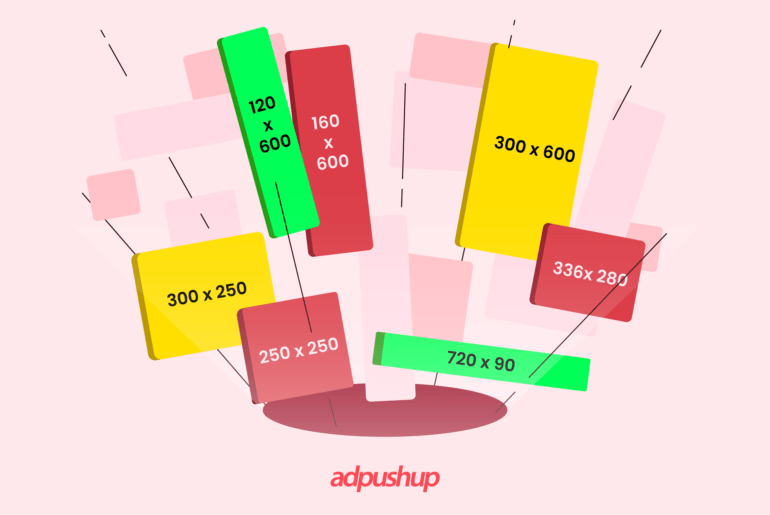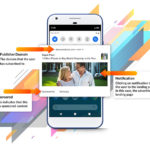Discover the top-performing banner ad sizes for your ads, optimize your advertising strategy with the most effective banner sizes, and ultimately maximize engagement and conversions.
Banner ads have become a cornerstone of online display advertising, seamlessly blending into websites to catch your eye and lead you towards action. They’re loved for their knack to convey messages effectively, boost brand recognition, and drive conversions.
What’s more, banner ads are budget-friendly. Advertisers can set their spending limits, pinpoint specific audiences, and track campaign performance closely. This level of control means you get the most out of your investment with smart resource allocation.
With that being said, let’s now take a closer look at what banner ads are, how to choose the best banner ad sizes, and a lot more.
What are Banner Ads?
Banner advertising refers to the use of rectangular graphic displays designed to promote products, services, or brands on websites or online media platforms. Banner ads provide extensive reach and precise targeting capabilities. They can be displayed across various websites spanning multiple industries, ensuring exposure to a wide and diverse audience. Moreover, advertisers can leverage advanced targeting options such as demographic filters, geographic preferences, and user interests to enhance the relevance and impact of their ads.
Publishers strategically utilize the high-traffic zones on their websites to showcase banner ads, commonly positioning them at the front, bottom, or side of a page. Advertisers acquire this advertising space either through ad networks or direct negotiations.
Publishers strategically utilize the high-traffic zones on their websites to showcase banner ads, commonly positioning them at the front, bottom, or side of a page. Advertisers acquire this advertising space either through ad networks or direct negotiations. But before we delve into the standard web banner sizes and top-performing banner ad sizes, let’s discuss what display advertising is.
What are Responsive Banner Ads?
Responsive banner ads automatically adjust their size, appearance, and format to fit the available ad space on various websites and apps to fit the screen size. These ads assure a seamless experience for the user, whether using a mobile, desktop, laptop, tablet, or any other device.
The concept came to light with the rise of multi-device usage among the people. So, it’s now common for one person to use more than one device to access the internet. Thus, it is pivotal to display ads that ensure engagement regardless of the devices they’re running on.
Moreover, to understand the intricacies of using responsive banner ads, we have come up with a few pros and cons.
| Pros | Cons |
| Ensure a seamless experience for users across various devices. | The design and development of such ads are complex and require extreme coding efforts. |
| Reduces both costs and development time compared to creating multiple ad versions. | The ability to fine-tune the appearance for specific screen sizes is limited |
| Boosts audience engagement and extends reach due to compatibility with diverse devices. | The user may face compatibility issues if using outdated browsers or older technologies. |
Also Read – What are In-Banner Video Ads and How to Get Started With Them?
What is Display Advertising?
Display advertising involves banner ads on a publisher’s webpage or social network platform. These ads can take the form of text, images, or videos, with the main objective being to encourage visitors to click on them, redirecting them to the advertiser’s page.
Typically, display ad campaigns are conducted through ad networks like the Google Display Network (GDN) or Facebook Audience Network. Ad networks play a crucial role in facilitating audience targeting capabilities and ensuring the appropriate selection of ad formats.
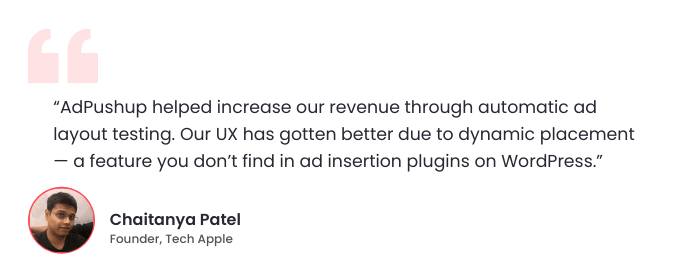
How does Banner Advertising Work?
Banner ads serve the dual purpose of informing visitors about brands, products, or services and enticing them to progress further in the purchasing process. Successful banner ads incorporate creative messaging, graphics, and a compelling call to action (CTA) designed to captivate visitors and spark interest in the advertiser’s offerings.
In the realm of conversions, retargeting plays a pivotal role, given that 96% of visitors do not convert during their initial visit. Banner ads prove effective not only in generating leads but also in the practical application of retargeting users.
Retargeting is executed through a cookie mechanism. When a visitor clicks on an ad and is directed to the advertiser’s page, a “pixel” is embedded in the visitor’s browser. This pixel tracks the user’s online activities, enabling advertisers to deliver highly personalized ads across the user’s primary online touchpoints.
Banner ads enable publishers to monetize their websites and empower marketers to raise awareness of their products and services, ultimately contributing to increased sales.
Why is Banner Advertising Relevant for Publishers?
If you are a publisher with a substantial monthly visitor count, a highly effective strategy for monetizing your website involves incorporating banner ads.
To seize this opportunity, you can offer space on your web pages for business promotions by partnering with display ad networks. Here’s a step-by-step overview of the process:
- Sign up with a display network: Begin by registering with a display network. This network will serve as the bridge for integrating banner ads onto your website.
- Receive and implement a script: Once registered, the display network will furnish you with a script to embed on your website. This script is designed to seamlessly showcase banner ads, alleviating the need for manual intervention on your part.
- Automated display of banner ads: Implement the provided script, and your website will automatically display banner ads. This automated process allows you to concentrate on content creation without the hassle of managing ads manually.
- Compensation for clicks: Your earnings are tied to the number of clicks the ads on your website receive. For each click, you receive compensation, creating a straightforward and performance-driven monetization model.
By adopting this approach, you can effectively leverage your website’s content and traffic to generate revenue through banner ads. This symbiotic relationship between your content creation efforts and advertising partnerships enhances your ability to monetize your platform successfully.
Why is Banner Advertising Relevant for Advertisers?
For advertisers seeking to enhance brand visibility or elevate product and service sales, a strategic approach involves advertising on publisher sites that cater to specific niches or those with substantial traffic.
Regardless of the chosen avenue, the objective remains consistent: directing traffic to your site through the utilization of banner ads. Here’s a concise overview of this process:
- Sign up with a display ad network: Commence the process by enrolling with a display ad network. This network will serve as the conduit for integrating your banner ads into the chosen websites.
- Select the type of website for ad placement: Make a strategic decision regarding the type of website where you wish to display your ads. Whether niche-specific or high-traffic general sites, this choice is pivotal to reaching your target audience effectively.
- Automated placement on preferred websites: Once enrolled and preferences are set, the display ad network will automatically position your banner ads on the selected websites. This automated placement streamlines the process, allowing you to focus on achieving your advertising goals.
- Payment based on performance: Your payment structure is typically tied to either per-click or per-impression metrics. This means you pay based on the number of clicks your ads receive or the number of times they are displayed, providing a flexible and results-driven approach to advertising.
By following this approach, advertisers can strategically leverage banner ads to drive traffic to their websites, whether by targeting specific niches or tapping into high-traffic platforms, all while maintaining a performance-based payment system.
Why Is Banner Ads Size Important?
Banner ads are graphical advertisements displayed on websites, typically in the form of images or interactive multimedia elements.
They are designed to attract users’ attention and promote products, services, or messages. These ads are strategically placed within a website’s layout to maximize visibility and engagement.
Think of them as the visual storytellers of the online space. They captivate and engage users, sparking their curiosity and enticing them to take action.
Whether it’s making a purchase, signing up for a service, or simply learning more about a brand, banner ads are crucial in driving user engagement and generating business.
As already mentioned, banner ad size plays a critical role in its effectiveness. Different sizes impact user engagement, visibility, and click-through rates. Here are a few reasons why ad size matters:
Visibility
Larger banner ads size tend to attract more attention as they occupy more screen real estate. They are more likely to be noticed by users, increasing the likelihood of engagement and click-throughs.
Compatibility
With the diverse range of devices and screen sizes available today, choosing the right banner size ensures platform compatibility. Responsive design and adaptability are crucial to ensuring that your ads display properly on desktops, mobile devices, and tablets.
Ad Placement Opportunities
Websites have designated spaces for specific banner ad sizes. By selecting popular sizes, you can take advantage of prime ad placements and increase the visibility of your ads.
User Experience
Banner ads enhance the overall user experience by seamlessly blending into the website’s design. Ads that are too large or intrusive may disrupt the user’s browsing experience and lead to negative brand perceptions.
Common Banner Ad Sizes (most common banner ad sizes) for Publishers
When it comes to choosing the right ad sizes for your website, the many options available out there can feel overwhelming.
However, you can simplify the decision-making process by considering the preferences of advertisers who often favor specific web banner ad sizes. By narrowing down your choices to those preferred sizes, you can streamline the selection process.
Nevertheless, it is crucial to evaluate how the chosen ad size will affect your content and the overall user experience before making a final decision.
Here are some of the top-performing banner ads:
1. Leaderboard Banner Ads Size
Size in Pixels: 728×90
Leaderboard banner ads are quite popular and are usually positioned at the top of a webpage.
Advertisers find it favorable due to its generous space for showcasing their message, making it a highly impactful format for enhancing brand recognition.
Moreover, its greater viewability further enhances its value, allowing you to maximize its selling potential.
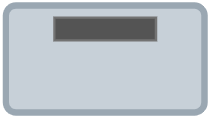
Leaderboard (728×90)
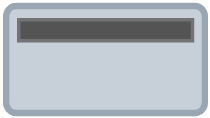
Large Leaderboard (970×90)

Mobile Leaderboard (320×50)
2. The Large Rectangle Size
Size in Pixels: 336×280
This particular size is frequently utilized for display ads, offering advertisers sufficient space to highlight their product or service.
It presents a favorable choice for publishers aiming to provide a well-rounded ad experience for their users and is commonly positioned in the middle or at the bottom of a webpage.
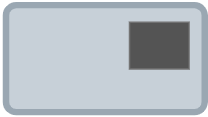
Large Rectangle (336×280)
3. The Medium Rectangle Size
Size in Pixels: 300×250
300×250 banner ads are commonly referred to as an “inline rectangle,” this particular size finds frequent usage in websites abundant with content.
It offers advertisers a compact yet effective space to showcase their message.
For publishers seeking to monetize their sites while maintaining an optimal user experience, this size proves to be a popular choice.
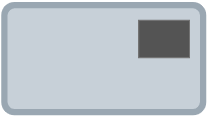
Medium Rectangle (300×250)
4. The Skyscraper Size
Size in Pixels: 120×600
This particular size is ideal for vertical ads and is commonly positioned along the side of a web page.
Its slender and elongated format enables seamless integration into tight areas while ensuring visibility for visitors.
It presents an excellent choice for publishers aiming to provide their users with a distinctive advertising experience.
5. The Wide Skyscraper Size
Size in Pixels: 160×600
This format is akin to the Skyscraper but with a broader layout. Often positioned on the side of a web page, it offers advertisers a neat and straightforward structure to showcase their message.
It proves perfect for presenting sizable images and more intricate text, all while maintaining a compact size to accommodate smaller spaces.
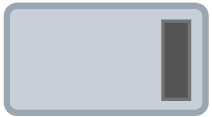
Wide Skyscraper (160×600)
6. The Large Skyscraper Size
Size in Pixels: 300×600
Often referred to as a ‘half-page ad,’ this particular size presents a distinctive and compelling avenue for displaying advertisements.
It grants advertisers a generous area to showcase their message while adhering to a vertical format.
This format proves particularly fitting for websites abundant in vertical space, enabling publishers to monetize their sites without compromising the user experience.
7. 300×250 Medium
Size in Pixels: 300 x 250
Another commonly used size is the medium rectangle, measuring 300×250 pixels. This versatile square or rectangular ad format fits well within content areas and can be placed within articles, sidebars, or in-between paragraphs.
8. Square Size Ads
Size in Pixels: 250×250 pixels
The square size, measuring 250×250 pixels, provides a compact format that can be placed within sidebars, widget areas, or embedded within the content. Its balance between visibility and unobtrusiveness makes it a popular choice.
These are just a few examples of popular banner ad sizes, and the choice of size depends on factors such as ad placement opportunities, the target audience, and more.
Selecting the right size for your banner ads can help you optimize their visibility, engagement, and overall impact on your advertising strategy.

Square (250×250)
Popular Banner Ad Size for Advertisers
Here are the standard web banner sizes for advertisers:
Google Banner Ads Sizes: Standard Banner Sizes
| Small Square Banner Ad – 200 x 200 | |
| Large Rectangle Banner Ad – 336 x 280 | |
| Google Square Ad – 250 x 250 | |
| Leaderboard Banner Ad – 728 x 90 | |
| Inline Rectangle Banner Ad – 300 x 250 | |
| Skyscraper Banner Ad – 120 x 600 | |
| Wide Skyscraper Banner Ad Size– 160 x 600 | |
| Half-Page Banner Ad – 300 x 600 | |
| Large Leaderboard Banner Ad – 970 x 90 |
Instagram Banner Ad Sizes
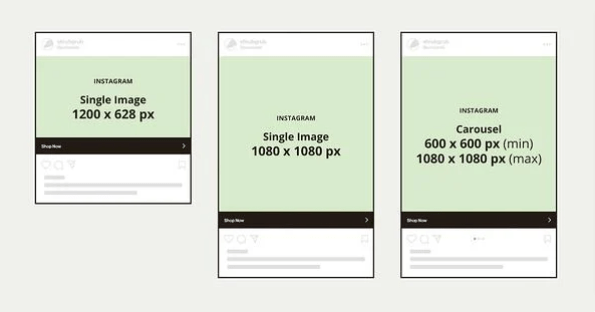
| Single Image Banner Ads – 400 x 500 | |
| Instagram Video Banner Ads – 400×500 | |
| Instagram Carousel Banner Ads Size – 1080 x 1080 | |
| Instagram Stories Carousel Ads – 1080×1920 | |
| Instgram Slideshow Banner Ads – 600 x 600 | |
| Instagram Stories Image Ads – 1080 x 1920 | |
| Instagram Stories Video Ads – 1080 x 1920 | |
Facebook Banner Ads Sizes
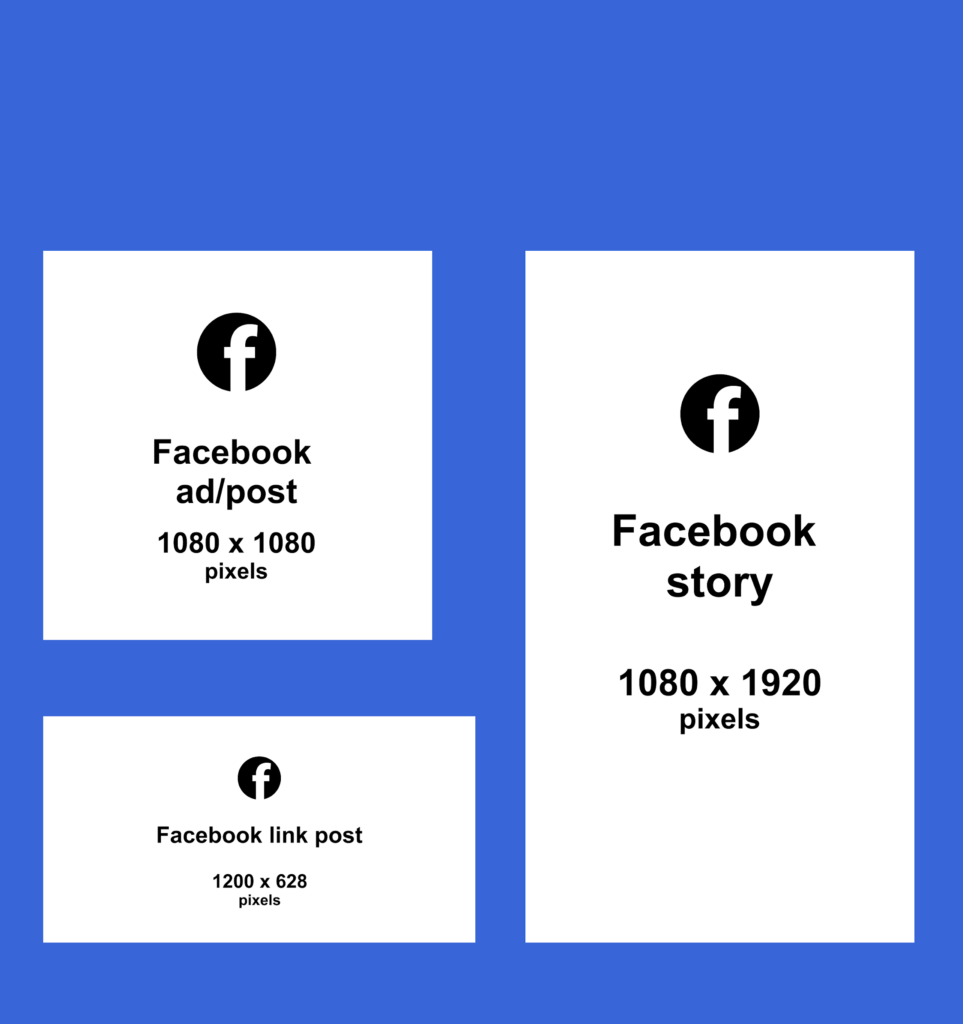
| Facebook Carousel Banner Ads – 1080 x 1080 | |
| Facebook Marketplace Banner Ads – 1200 x 628 | |
| Facebook Instant Articles Ads – 1200 x 628 | |
| Facebook Stories Banner Ads – 1080 x 1920 | |
| Facebook Collection Ads – 600 x 600 | |
| Facebook Feed Image Ads – 1200 x 628 | |
| Facebook Feed Video Ads – 600 x 315 | |
| Facebook Right Column Ads – 1200 x 628 | |
Also Check: Best Mobile Ad Sizes & Formats For Increased Viewability
Top Performing Banner Ad Sizes in 2025 (top banner ad sizes)
One pivotal aspect that profoundly influences the success of banner ads is their size. The size of a banner ad plays a critical role in determining its visibility, user engagement, and click-through rates.
Therefore, choosing the right size is essential to ensure that the ad effectively captures the attention of the target audience and seamlessly integrates into the webpage’s layout.
That being said, let’s have a look at a few of the banner ad sizes.
1. Mobile Leaderboard – 320 x 50
Given that the majority of people now access the internet through their mobile devices, it’s no surprise that mobile ad banners are among the top-performing ad formats. The 320 x 50 size stands out as one of the most popular choices for mobile banner ads, widely utilized by advertisers on both mobile browsers and apps.
Incorporating various types of mobile banner ads, including mobile leaderboard banners, into your advertising strategy can significantly enhance your reach. Mobile leaderboards are positioned at the bottom of the screen, appearing on both apps and web pages, offering a strategic placement to capture user attention and maximize the effectiveness of your advertising efforts.
2. Medium Rectangle – 300 x 250
The 300 x 250 banner size (medium rectangle ad size) emerges as a versatile banner size, effectively catering to both mobile and desktop platforms. Widely adopted, it serves the purposes of mobile banner ads as well as desktop banner ads.
Medium rectangle ads demonstrate optimal performance when seamlessly integrated with text content. Their versatility extends to accommodating various ad formats, including text ads, image ads, or video ads.
When applied to mobile web pages, a medium rectangle banner ad serves a dual function. It acts as a visual break in lengthy content, offering users a respite as they scroll down. Furthermore, it proves valuable as a below-the-fold placement for mobile ads on devices.
Due to its size and adaptability to diverse ad formats, the medium rectangle is occasionally deemed intrusive to native content. Nevertheless, well-designed and strategically placed medium rectangle banner ads have the potential to complement the web page, delivering mutual benefits to both advertisers and publishers.
Given the considerations outlined above, it is imperative for marketers to adhere closely to specific guidelines for medium rectangle ad units within the Google Display Network (GDN). Adhering to these guidelines ensures that the integration of medium rectangle ads aligns with best practices, maximizing the effectiveness of the advertising strategy.
3. Leaderboard – 728 x 90
A leaderboard or horizontal banner ranks among the most commonly used banner ad sizes on desktop web pages, typically positioned above the main content and occasionally between articles.
While the 728 × 90 leaderboard can also be placed at the bottom of a page, most marketers contend that its optimal performance is achieved when situated above the fold. This preference stems from the observation that many visitors tend not to scroll all the way to the bottom of a page. Even if they do, the likelihood of engagement diminishes, as the content has already been consumed, and users are more inclined to navigate elsewhere.
For smaller publishers, adhering to the 728 x 90 leaderboard size is a prudent choice, particularly until there is a substantial improvement in audience reach. This approach aligns with a strategic progression, allowing smaller publishers to establish their online presence effectively.
4. Wide Skyscraper – 160 x 600
The 160 x 600 skyscraper size stands out as the most popular among skyscraper banners and is a favored choice for placing banner advertisements. The wide skyscraper ad excels in handling interactive content. Its appeal lies not only in capturing the user’s attention but also in seamlessly complementing content-rich sites with its visual lightness.
The optimal placement for a wide skyscraper is within a website’s right and left sidebars. Given its size, which almost covers a full page vertically, users can easily notice it and engage with the content.
What Factors Must Be Considered When Choosing Banner Sizes?
As there are umpteen banner ads sizes for web, it can be pretty confusing to find out what dimensions can bring out the best results. In that case, you need to take care of the following factors to choose the right banner size:
Target Audience
First of all, you must decide your target audience before choosing the right banner ad size. You can consider the demographics and analyze the age, preferences, and device usage of your audience. For instance, if your target audience comes out to be youngsters, chances are pretty high that they’ll be using smartphones or any other portable devices.
In that case you should choose best banner ad sizes out there made for mobiles. The sizes include – a mobile banner (300 x 50), a large mobile banner (320 x 100), and a mobile leaderboard (320 x 50).
Banner Placement
The size of the banner ad can impact where the ad is displayed on the page. So, when it comes to the perfect banner ad placement, you can choose above-the-fold ad placements. This is because most users notice the ad present above the fold and often miss the ads running below the fold.
However, when advertisers publish ads using Google AdSense, they don’t get to decide where their ads will be placed on the page. So, they can choose the right banner ad size which will be published above the fold. For example, you can choose the leaderboard banner size, which usually sits on the top of the page.
Budget
There’s no doubt that website banner sizes are more expensive than other options. The price paid depends upon a lot of factors that include format (static, animated, or video), placement, targeting, and the ad network used.
The banner size also affects cost, depending on ad inventory and placement on the page. Hence, determining which banner sizes are cheaper or more expensive can be challenging.
The Messaging
While choosing the perfect banner ad size, you must make sure that the message conveyed through the ad is clear and easy to read. For example, if you choose a 300 x 250 banner size, and stuff 200-250 words in it, the result would be an ad, which is difficult to read. So, make sure the message conveyed is short or written according to the banner ad size.
Moreover, small differences in website banner sizes can significantly impact their effectiveness. Nevertheless, your goal is to not only have people see your ad but also to encourage clicks and convert leads into customers. The right banner size plays a crucial role in achieving this.
What are the IAB Standard Ad Sizes?
IAB stands for Interactive Advertising Bureau is an organization that empowers the media and marketing industry so that the stakeholders proliferate in the digital economy.
This organization sets standards to prevent ad fraud and protect the privacy of the users so that they can enjoy a seamless browsing experience. For instance, ruling out third-party cookies compels advertisers and publishers to reassess their strategies for handling user data. Also, using first-party and second-party data remains crucial for delivering ads that align with users’ interests and enhancing content personalization.
The primary objectives of IAB include:
- Assuring that users have a seamless experience without facing distractions due to ads.
- Allowing users to control their advertising experience. For example, clear and visible close buttons can be added to ad units.
- Ensuring that the website speed is fast enough to make the user stay on the web page which minimizes the bounce rate.
Top Factors That Affect Banner Ad Performance
Not all banner ads are effective, so not every ad that you see is converting leads into potential customers. That said, let’s take a look at the factors that affect the banner ad’s performance.
Click-through Rate
The click-through rate measures how often users click on a banner ad relative to its number of impressions. So, if the CTR is high, it gives you a slight idea that the ad is engaging enough, but it doesn’t consider other essential factors.
Impressions and Reach
Impressions refer to the number of times an ad is displayed, while reach indicates the number of unique users who see it. High impressions with broad reach ensure that the ad is visible to a large audience, increasing the chances of attracting potential customers and building brand awareness.
Viewability and Attention
A visitor watching the ad is surely not enough, they must engage with it, which will contribute to the overall user engagement. Ensuring high viewability and capturing attention are crucial for effective advertising, as they determine if the ad has the opportunity to convey its message and influence the audience.
Conversions and Return on Ad Spend (ROAS)
When a user clicks the ad, engages with it, or takes any action, it will count as a conversion. ROAS calculates the revenue generated from the ad relative to its cost. Considering both factors will help you analyze ad performance and provide better insights into profitable customer actions.
Frequency and Recency
Frequency refers to how often an individual user sees an ad, while recency indicates the time since they last saw it. Balancing these factors is vital; too much exposure can lead to ad fatigue, while too little can result in low recall and effectiveness.
Creative Quality and Relevance
The quality and relevance of an ad are among the most important factors that impact its effectiveness. An ad with high-quality visuals and messages resonates with the target audience, which eventually drives engagement. Relevant ads are more likely to be well-received, improving overall ad performance and achieving campaign goals.
User Feedback
User feedback received from surveys, reviews, social media comments, or any other method provides valuable insights into how the audience perceives the ad. It helps refine future campaigns, ensuring they better meet audience needs and preferences.
How to Design the Best Banner Ads in 2025?
The primary goal of a banner ad is to persuade users to engage, making visibility and attractiveness critical elements. While choosing the correct size enhances visibility, the effectiveness of an ad hinges on its persuasiveness.
Design is pivotal in making an ad attractive, and one doesn’t necessarily need to be an expert designer to create compelling banner ads. However, a solid understanding of design principles is beneficial. Additionally, marketing knowledge is crucial for assembling materials and crafting a compelling message for potential customers.
Here are some essential design tips for banner ads in 2025:
1. Analyze Your Customers and Create Compelling CTAs
One of the most important elements of banner ads, like every other ad, is messaging. As an advertiser, you know who your target customers are and who you want your ads to engage with. However, if you dive deeper into your customers’ behavior and understand their emotions and pain points, you can figure out what CTA makes them want to click your ad.
Once a user notices the ad and is attracted by its design, it’s up to the CTA to persuade them to take the next step. It’s always best to understand your buyer persona and what promise they will engage with. This is essential to creating the “perfect” CTA.
2. Ensure to Have a Clutter-Free Design and Messaging
Banner ads share similarities with digital billboards, as users have a brief time window to notice them. Visitors typically come to a page for its content, emphasizing the importance of delivering a clear and understandable message through banners. In this context, cluttered designs are likely to be ineffective.
The key to conveying a clear message is to prioritize a clean design. Strive to include minimal text and a restrained number of images in your banner ads. By doing so, you increase the likelihood of capturing users’ attention within the limited timeframe, enhancing the overall effectiveness of your advertising efforts.
3. Map Different Ad Formats
Display ads offer extensive support for various ad formats, and selecting the right format is crucial for effectively showcasing your product or service. For instance, if you’re a fashion brand aiming to highlight your best works, opting for a video or GIF format may be most impactful.
When implementing dynamic ads, careful consideration of their placement and timing is essential. Ensuring that users encounter the ad at the right moment is critical, as you wouldn’t want them to notice the ad when it’s only partially played. Strategic placement and timing contribute significantly to the overall success of dynamic ads, enhancing their ability to capture and retain the audience’s attention.
4. Test on All Devices
Users may encounter your ad on various devices, so it’s essential to consider the adaptability of your banner ad design. If you’re exclusively focusing on designing your banner ad for desktop pages, it’s crucial to reconsider your approach.
Fortunately, many common banner sizes are compatible with both desktop and mobile web versions. However, ensuring optimal placement on all devices is key. Additionally, in some cases, you might need to make specific design adjustments to ensure the ad looks and functions effectively across different devices. Taking this cross-device approach ensures that your banner ads maintain their impact and accessibility, regardless of the device on which users encounter them.
Popular Industry Trends for Banner Ads
The advertising industry is constantly evolving, and staying current with the latest trends and advancements is important. Some notable industry trends related to banner ad sizes include:
Video Banner Ads
With the increasing use of mobile devices, optimizing banner ad sizes for mobile platforms is crucial. Focus on sizes that align with responsive design principles and prioritize mobile-first approaches.
Interactive Elements
Incorporating interactive elements within banner ads, such as animations or mini-games, can boost engagement and improve user interactions.
Native Advertising
Native ads seamlessly blend into the website’s content, offering a more organic and non-disruptive user experience. Explore native ad formats and sizes that integrate well within the context of the webpage.
The Bottom Line
While banner ads continue to be relevant, the online user base is now dispersed across various devices. Furthermore, newer ad formats, such as video ads and animated banners, are often perceived as more effective than traditional static banner ads. This evolution in user behavior underscores the importance of adapting advertising strategies to align with changing preferences and technologies in the online landscape.
Choosing the perfect banner ad dimensions is vital to maximize impact.
Recognizing the significance of sizes, adhering to the best practices, and keeping up with industry trends can help you foster engagement and drive higher revenue.
Keep in mind that every advertising campaign is distinctive, and it’s crucial to assess the target audience, goals, and performance metrics to ascertain the most appropriate web banner ad sizes for your specific requirements.
Frequently Asked Questions: Banner Ad Sizes
Banner ad sizes matter because they impact the visibility, engagement, and overall effectiveness of the ads. Choosing the right size ensures optimal display on different devices and maximizes the chances of capturing users’ attention.
The top-performing banner sizes vary depending on the specific campaign, target audience, and ad placement. However, some popular sizes include the leaderboard (728×90 pixels), medium rectangle (300×250 pixels), Skyscraper (160×600 pixels or 120×600 pixels), and square (250×250 pixels).
When selecting a banner size, consider factors such as ad placement opportunities, target audience demographics, campaign goals, and user experience. It’s also helpful to analyze industry research and performance data to determine which sizes have been successful for similar campaigns.
Yes, using multiple banner sizes can be beneficial as it allows you to target different placements and reach a wider audience. However, ensure that each size is optimized for its specific placement and maintains consistency in branding and messaging.
To optimize the design of your banner ads, ensure that they are visually appealing, have clear messaging, and include a strong call-to-action. Additionally, consider responsive design principles to ensure adaptability across various screen sizes and devices.
You can measure the effectiveness of your banner ads by tracking key performance metrics such as click-through rates, conversions, engagement, and return on investment. Utilize analytics tools and A/B testing to gather data and optimize your campaigns.
When selecting banner sizes for different devices, consider the screen dimensions and user behavior associated with each device. Prioritize responsive design and choose sizes that adapt well to desktops, smartphones, and tablets, ensuring a seamless and engaging user experience.
Common banner ad sizes include 468 x 60 (banner), 728 x 90 (leaderboard banner), 250 x 250 (square) and 120 x 600 (skyscraper). The standard banner ad for mobile is 320 x 50 (mobile leaderboard).
A 160 x 600 banner ad is not a great option on mobile devices because of their limited width. Instead, you can consider the 320 x 50 (the mobile leaderboard ad) size as it’s among the top-performing mobile banner ads.

Deepak has a keen eye for detail and a deep understanding of the ad tech landscape. Whether it’s through in-depth articles, thought-provoking insights, or compelling storytelling, he’s dedicated to helping people navigate the complex world of ad tech with the simplicity of his words.
